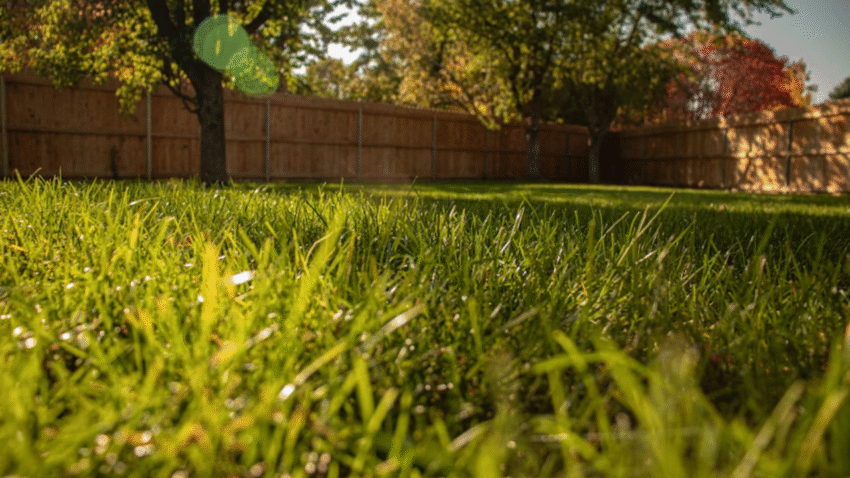Introduction
Love your dog but hate those unsightly yellow or brown spots on your lawn? You’re not alone! Learning how to repair lawn burn from dog urine is one of the best ways to keep your yard green, healthy, and pet-friendly. This step-by-step guide will show you why those dead patches happen, how to fix them properly, and what you can do to prevent future damage so you and your pup can both enjoy a lush, beautiful lawn.
Why Repairing Lawn Burn Matters for a Healthy Lawn
Dog urine contains high levels of nitrogen and salts. While nitrogen is great in small doses (it’s a key ingredient in fertilizer!), too much concentrated in one spot burns your grass, leaving ugly dead patches surrounded by dark green rings where the nitrogen has diluted just enough to feed the lawn.
Repairing these spots quickly prevents weeds and bare patches from taking over. Plus, you’ll keep your lawn looking uniform, healthy, and safe for pets and family.
Step-by-Step Guide to Repair Lawn Burn From Dog Urine
Follow these easy steps to repair the damage and keep your yard looking its best:
1. Identify the Burn Spots
Look for areas that are yellow or straw-colored with a dark green halo around the edges. This is a telltale sign of dog urine burn — unlike fungal diseases, which usually spread irregularly.
Try to spot new burns early so you can fix them before the damage worsens.
2. Flush the Area With Water
As soon as you notice a fresh urine spot, water it thoroughly to dilute the nitrogen and salts:
- Use a hose or watering can to soak the area deeply.
- This helps wash excess nitrogen past the root zone and reduces the burn’s severity.
Flushing works best if done right away — ideally within a few hours of the “incident.”
3. Remove Dead Grass
Use a garden rake or a small hand rake to gently remove any completely dead grass. Loosen the top layer of soil so new seed or sod can make good contact.
Rake the area to about ½ inch deep for best results.
4. Neutralize the Soil (Optional)
If your soil is heavily compacted or you have multiple dog spots, lightly sprinkle garden gypsum over the area. Gypsum helps neutralize excess salts and improves soil structure. Water the gypsum in well.
Note: This step isn’t mandatory for mild burns but can help if your soil has frequent urine patches.
5. Add Fresh Topsoil
Add a thin layer of fresh topsoil or compost to the bare spot to create a fertile bed for new grass seed or sod. Spread it evenly and lightly tamp it down with your foot or a rake.
This extra soil improves seed-to-soil contact and encourages quick germination.
6. Reseed or Patch With Sod
- For seed: Use the same grass type you already have in your lawn for a uniform look. Sprinkle seed over the prepared soil and lightly rake it in.
- For sod: Cut a piece of sod to fit the spot, press it down firmly, and water well.
Lightly cover seeds with a dusting of straw or peat moss to retain moisture and deter birds.
7. Water Consistently
Keep the newly repaired area consistently moist until the new grass is established:
- Water lightly once or twice a day until seeds germinate.
- Reduce watering frequency gradually as the grass grows, but make sure it doesn’t dry out.
Avoid walking on the area until the grass is well rooted.
8. Mow Carefully
When the new grass reaches the same height as the rest of your lawn, mow it with sharp blades. Don’t remove more than one-third of the blade height to avoid stressing new growth.
Common Mistakes to Avoid
Mistake 1: Not Flushing Urine Spots Right Away
Solution: Always keep a hose or watering can handy. The sooner you dilute urine spots, the less severe the damage.
Mistake 2: Using the Wrong Grass Seed
Solution: Match your seed type to your existing grass for a seamless blend.
Mistake 3: Skipping Soil Prep
Solution: Loosen soil and remove dead grass so new seed or sod has the best chance to take root.
Mistake 4: Overwatering or Underwatering Repairs
Solution: Keep soil moist, not soggy. Consistency is key for germination and root development.
Mistake 5: Ignoring Recurring Spots
Solution: Take steps to train your dog or create a potty zone to prevent future damage (see prevention tips below).
Extra Lawn Care Tips & Hacks
✅ Create a Designated Potty Area: Train your dog to use one part of the yard, ideally covered in mulch or gravel, to limit burn spots on your main lawn.
✅ Water After Your Dog Pees: Carry a watering can when you let your dog out — a quick rinse can make a big difference.
✅ Feed Your Dog a Balanced Diet: Diet changes alone won’t solve urine burn, but a healthy diet with the right protein levels can help. Talk to your vet before making changes.
✅ Use Dog Rocks or Urine Neutralizers Cautiously: Some products claim to reduce urine damage but always check with your vet to be sure they’re safe.
👉 Don’t miss our guide on “How to Top Dress Your Lawn With Compost” — perfect for restoring thin patches and improving soil health!
Conclusion
Knowing how to repair lawn burn from dog urine will help you maintain a gorgeous lawn and a happy pup at the same time. With quick action, simple soil prep, and a bit of overseeding, you’ll banish those yellow spots for good. Combine repairs with smart prevention — like rinsing fresh spots and creating a designated potty area — and you’ll spend less time fixing damage and more time enjoying your yard with your best friend.
Bookmark this guide and share it with fellow dog parents — your grass (and your four-legged buddy) will thank you!
